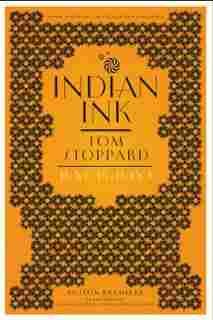Contribute
| NetSAP Hosts Tom Stoppard Play Indian Ink |
Manaswini Garimella
06/26/2007
NetSAP, the Network of South Asian Professionals of Boston, along with Small World Big Sky Productions brings the Tom Stoppard play Indian Ink to the stage at the Boston Center for the Arts. The play is set in 1930 in India, during the year of Gandhi's Salt March, and centers around an English poet, Flora Crewe (Janelle Mills), in her travels throughout the country. While Mills and Bhushan do an admirable job of playing their parts (Bhushan is especially good as the frustrated artist dealing with new ideas), Stoppard's play itself is lacking in rasa, its central theme. Its personalities are stock characters – Flora is the 1920s flapper, Nirad is the educated Indian Anglophile, Eldon is the stuffy academic, but worse, it only reinforces colonial stereotypes. It isn't particularly surprising – Stoppard lived in British India for a short period during his childhood, but I expected more from the writer of
Shakespeare in Love, Arcadia, and Rosencrantz and Guildenstern are Dead. Stoppard does stress the importance of staying true to one's heritage, but why is it that Nirad must be liberated by Flora, an Englishwoman, and come to this realization through her? In contrast, Flora isn't changed at all by India; she uses it as inspiration, but it doesn't seem to bring any fundamentally new way of looking at the world to her. We see this point clearly in the final portrait Nirad does of Flora – she is against an Indian background, which is done in a classical Indian style, but her body, nude, is painted in the style of Western realism. The painting's erotic symbolism, while it appears to bring two cultures together, only highlights how one changes and the other does not. NetSAP and Small World Big Sky do bring a worthwhile production to Boston, especially since South Asian theatre, unlike cinema and literature, is so rare a medium here and far less patronized. This is the third year NetSAP Theatrics brings a play to Boston, and it is also commendable of Small World Big Sky to take on a play with such a strong South Asian theme. Indian Ink runs from June 15- July 1 at the Plaza Theatre in the Boston Center for the Arts.
Flora befriends an Indian painter, Nirad Das (Bharat Bhushan), and half of the play focuses on the backgrounds of the two artists, and the way it influences both their thoughts and art. The other half of the play focuses on an American biographer of Flora Crewe, Eldon Pike (Chuck Schwager), as he attempts to put together her story after she leaves for India. He is aided by her sister (Jean Sheikh) through letters and portraits.
The story is carried by the friendship between Flora and Nirad, as they discover the benefits of each other's cultures. Flora is a free-spirited young woman with liberal ideas about sex, a fiercely independent spirit, and an openness to new ideas that she expresses through her poetry, while Nirad has a more traditional background and views, even though he idolizes Western painters. Nirad teaches Flora about the idea of rasa, the essence of all art, especially shringara rasa, the essence of love, which enable her to finish her poems, while Flora teaches Nirad to take a stand about his culture, to paint in a more Indian style, instead of imitating Western artists.
You may also access this article through our web-site http://www.lokvani.com/
